The Economics and Statistics Division maintains archives of previous publications for accountability purposes, but makes no updates to keep these documents current with the latest data revisions from Statistics Canada. As a result, information in older documents may not be accurate. Please exercise caution when referring to older documents. For the latest information and historical data, please contact the individual listed to the right.
<--- Return to Archive
For additional information relating to this article, please contact:
August 23, 2021DEPENDENCY RATIOS, JULY 1 2020 Statistics Canada has prepared estimates of dependency ratios for Canada, Provinces and Health Regions. A 'dependency ratio' is the number of children and youth (ages 0-19) plus the number of seniors (ages 65+) per 100 persons aged 20-64, who are assumed to make up the bulk of the working population.
As of July 1, 2020 Nova Scotia had a dependency ratio of 68.0 youth and seniors per 100 persons aged 20-64. The national dependency ratio was 65.0. The highest dependency ratios were in Saskatchewan and New Brunswick while the lowest ratios were in Alberta and British Columbia.
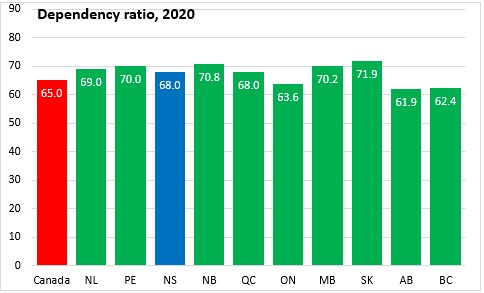
By health region, the dependency ratio was higher in Western, Northern and Eastern regions of Nova Scotia while the Central region had a lower dependency ratio.

Over time, Nova Scotia's dependency ratio has increased since reaching a recent low of 58.9 in 2011. Canada's dependency ratio has been increasing since 2010, but at a slower pace than observed in Nova Scotia.

Dependency ratios have been rising across all health regions, but at a slower pace in Central.

The dependency ratio depends on the proportions of the population that are 65 years of age and older as well as the portion of those under 20 years of age. Compared with other provinces, Nova Scotia has the third highest portion of seniors (21.3%) in the population, but the second lowest portion of youth (19.2%). The national portion of seniors was 18.0% while the national portion of youth was 21.4%.

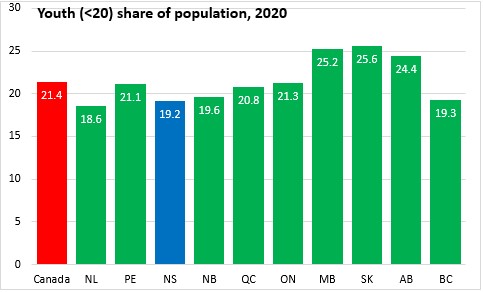
Across Nova Scotia, there was greater variation among health regions in the proportion of seniors in the population. There was less variation among health regions in the proportion of youth in the population.
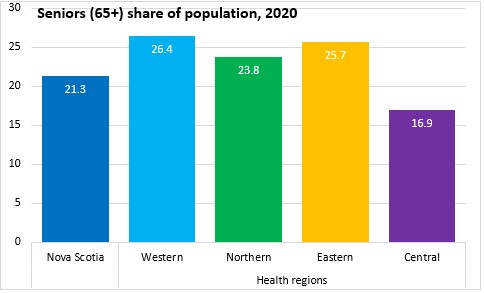
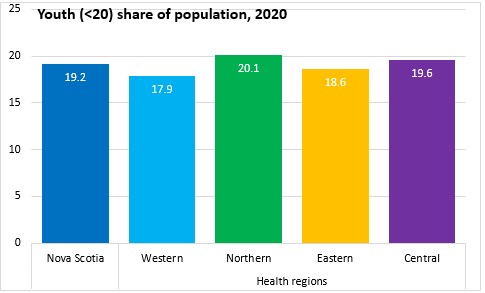
Over time, the share of seniors in the Nova Scotia population has risen more quickly than the national share of seniors in the population. However, the share of youth in the population has declined in Nova Scotia while that proportion has risen across the country.

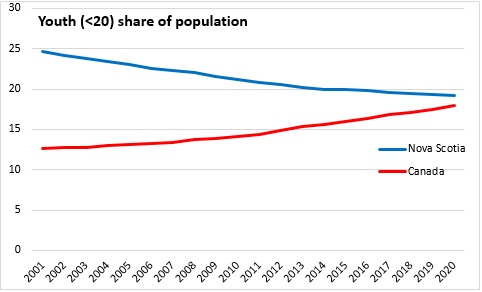
The share of seniors in the population has been rising in all health regions, but the growth has been slower in the Central health region. The decline of youth as a share of the population has been more consistent across all health regions in Nova Scotia.
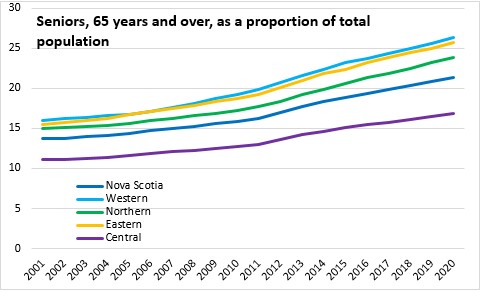
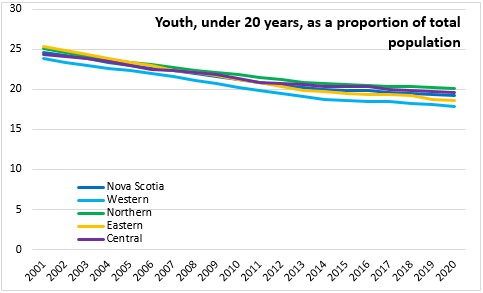
Source: Statistics Canada. Table 17-10-0133-01 Dependency ratio (2016 Census and administrative data), by age group for July 1st, Canada, provinces, territories, health regions (2018 boundaries) and peer groups
<--- Return to Archive